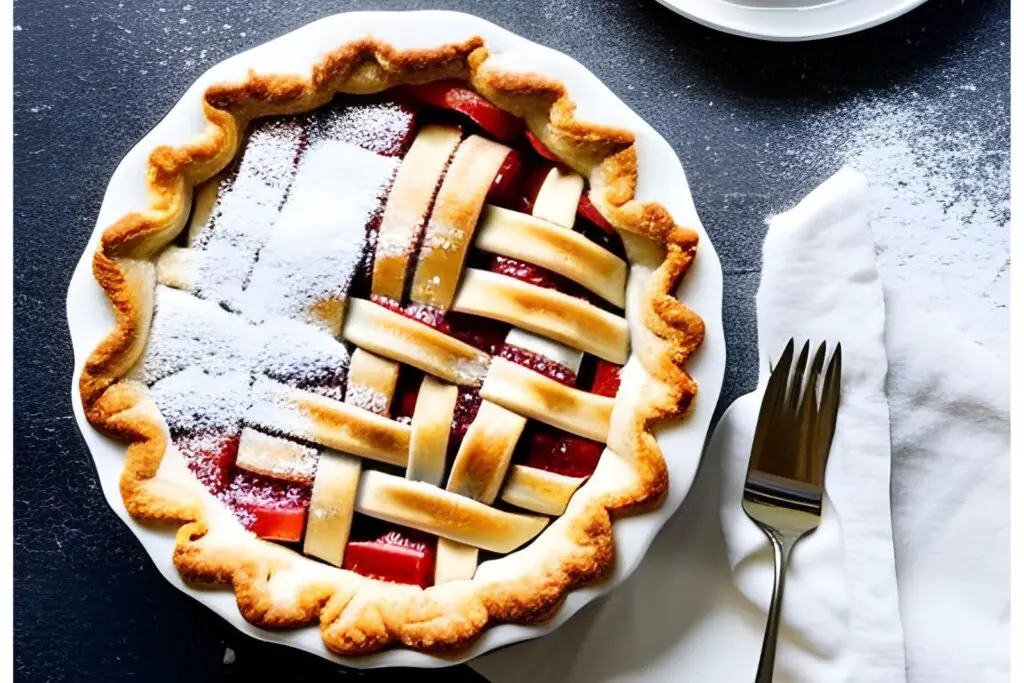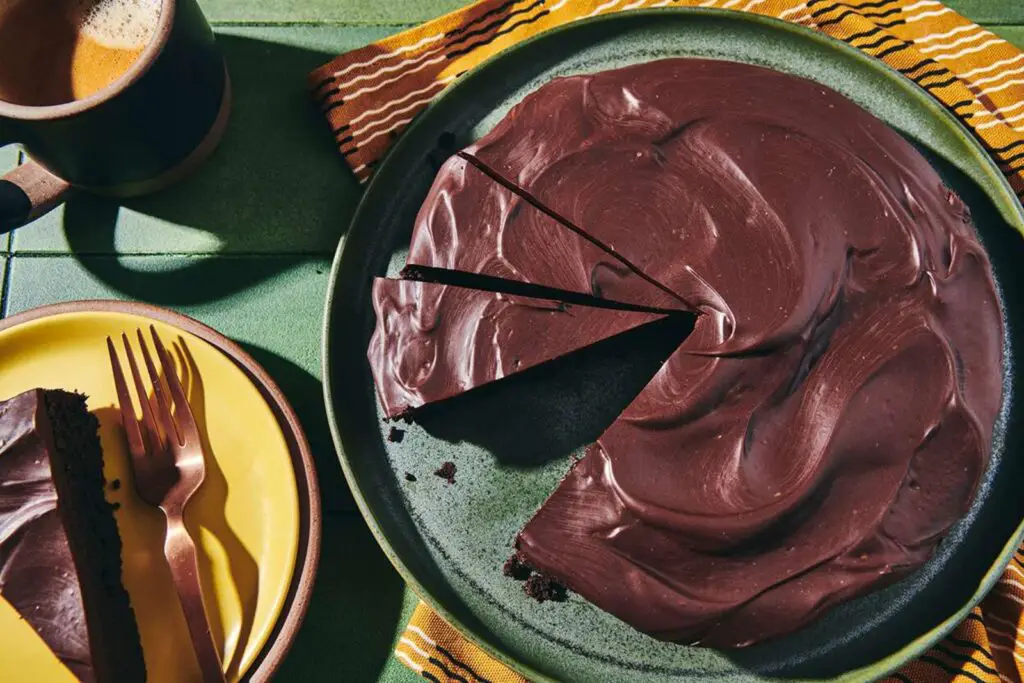
Egg muffins, a delightful and nutritious breakfast option, are individual servings of fluffy eggs combined with a variety of vegetables, cheese, and proteins, baked to perfection in muffin tins. These portable and versatile treats are not only delicious but also convenient for busy mornings. Whether you have a surplus of egg muffins or want to prepare them in advance for quick and easy breakfasts, freezing is a smart solution. Freezing egg muffins allows you to preserve their freshness, flavors, and textures, ensuring that you can enjoy a wholesome and satisfying meal even on the busiest of days. In this guide, we will explore the best practices for freezing egg muffins, including proper cooling, packaging, and reheating techniques, so you can have a stash of these delightful treats ready to be enjoyed whenever hunger strikes. Join us as we uncover the secrets of freezing egg muffins and embrace the convenience of having a nourishing breakfast option at your fingertips, making mornings a breeze.
Here are the simple steps to freeze egg muffins:
Step 1: Bake Fresh Egg Muffins
To begin the freezing process of egg muffins, you first need to bake a fresh batch of them. Start by preheating your oven to the temperature specified in your recipe. Then, gather the necessary ingredients and a muffin tin.
Grease or line the muffin tin with paper liners to prevent the muffins from sticking. This will make it easier to remove them later on. Next, prepare the egg mixture according to your preferred recipe. Whisk together the eggs and any additional ingredients such as vegetables, cheese, or meats.
Once the mixture is ready, carefully pour it into each cup of the muffin tin, filling them about three-fourths full. It’s important not to overfill the cups as the mixture will expand during baking.
After filling the cups with the egg mixture, you can add any desired toppings or garnishes on top. This could include grated cheese, herbs, or sliced vegetables, for example. Feel free to get creative and experiment with different combinations of ingredients.
Place the filled muffin tin in the preheated oven and bake the egg muffins until they are fully cooked and lightly golden. The baking time can vary depending on the size of the muffins and the specific recipe, but it usually ranges from 15 to 20 minutes.
To check if the muffins are done, insert a toothpick or a knife into the center of one of the muffins. If it comes out clean or with only a few crumbs clinging to it, the muffins are ready. Avoid overcooking them to prevent them from becoming dry or rubbery.
Once the egg muffins are fully baked, remove the muffin tin from the oven and place it on a wire rack to cool. Allow the muffins to cool completely before proceeding to the next step. This cooling period is essential as it prevents moisture from accumulating during the freezing process.
Step 2: Allow the Muffins to Cool
After baking the egg muffins, it’s crucial to allow them to cool completely before proceeding with the freezing process. This step is important to prevent condensation and ice crystals from forming on the muffins, which can negatively affect their texture and quality when frozen.
When the muffins are removed from the oven, they will be hot, and their internal temperature will be high. Placing hot muffins directly into the freezer can create moisture, leading to the formation of ice crystals. These ice crystals can cause the muffins to become soggy or lose their original texture when thawed and reheated.
To prevent this, transfer the muffins from the hot muffin tin onto a wire rack or a heat proof surface. Allowing them to cool at room temperature enables the excess heat to dissipate gradually. The cooling process usually takes about 30 minutes to 1 hour, depending on the size and thickness of the muffins.
During this cooling period, it’s important to leave the muffins uncovered. This allows any residual steam to escape and helps to avoid trapping moisture. If the muffins are covered or placed in an airtight container while still warm, the trapped moisture can lead to condensation, creating a moist environment that promotes freezer burn and deteriorates the texture and flavor of the muffins.
To ensure the best results, find a cool and dry spot in your kitchen to let the muffins cool undisturbed. Keep them away from heat sources, such as stovetops or direct sunlight, as this can prolong the cooling process or cause uneven cooling.
Step 3: Arrange the Muffins for Freezing
After the freshly baked egg muffins have cooled completely, it’s time to arrange them in a way that promotes efficient and effective freezing. This step ensures that the muffins freeze evenly and prevents them from sticking together, making it easier to separate and use individual muffins later.
To begin, prepare a baking sheet or tray that will fit in your freezer. Line the sheet or tray with parchment paper or silicone mats to prevent the muffins from sticking to the surface. The non-stick properties of these materials make it easier to remove the frozen muffins later.
Take each cooled muffin and place it on the lined baking sheet or tray. Ensure that the muffins are arranged in a single layer, with some space between each muffin. Leaving space between them allows the cold air in the freezer to circulate around the muffins evenly, promoting uniform freezing.
The space between the muffins prevents them from sticking together during the freezing process. If the muffins are placed too close together, they can freeze together, making it difficult to separate them when you want to remove only a portion.
If you have a large batch of muffins and they can’t fit on a single baking sheet or tray, you can use multiple sheets or trays. Just make sure to distribute the muffins evenly across all the sheets, maintaining the recommended spacing between each muffin.
Step 4: Flash-Freeze the Egg Muffins
After arranging the muffins in a single layer on a baking sheet or tray, it’s time to initiate the flash-freezing process. Flash-freezing refers to rapidly freezing the muffins to preserve their individual shapes and prevent them from sticking together.
To begin, carefully transfer the baking sheet or tray with the arranged muffins into the freezer. Find a flat and stable surface in your freezer where the tray can sit securely without tilting or being disturbed.
Allow the muffins to remain in the freezer for approximately 1 to 2 hours. This duration may vary depending on the size and thickness of the muffins, as well as the temperature and efficiency of your freezer. The purpose of flash-freezing is to rapidly freeze the muffins, ensuring that the outer layer freezes quickly and minimizes the formation of large ice crystals.
Flash-freezing is beneficial for several reasons. First, it helps to maintain the individual shapes of the muffins. By freezing them quickly, the structure of the muffins is preserved, resulting in muffins that retain their original appearance and texture when thawed and reheated.
Secondly, flash-freezing prevents the muffins from clumping together. When the muffins freeze too slowly or when they are placed close together without proper spacing, there’s a higher risk of them sticking together. By flash-freezing the muffins in a single layer with sufficient space between each muffin, you reduce the chances of them becoming a solid mass and make it easier to remove individual muffins as needed.
During the flash-freezing process, it’s important to keep the freezer door closed as much as possible. Opening the freezer frequently or leaving it open for extended periods can result in temperature fluctuations, affecting the freezing process and potentially compromising the quality of the muffins.
Step 5: Package and Seal the Muffins
Once the egg muffins have been flash-frozen and are solid, it’s time to package and seal them for long-term storage in the freezer. Proper packaging helps to maintain the quality and prevent freezer burn, ensuring that the muffins remain fresh and delicious until you’re ready to enjoy them.
Start by removing the baking sheet or tray with the flash-frozen muffins from the freezer. Carefully peel off any parchment paper or silicone mats that were used to line the sheet or tray. This ensures that the packaging material adheres directly to the muffins and provides a secure barrier against moisture and air.
Now, you have a couple of options for packaging the muffins. One option is to individually wrap each muffin tightly with plastic wrap or aluminum foil. Place a muffin in the center of a piece of plastic wrap or aluminum foil and wrap it securely, making sure there are no gaps or openings where air can enter. Repeat this process for each muffin.
Individually wrapping the muffins not only protects them from freezer burn but also allows you to easily grab and thaw one muffin at a time without disturbing the others. It gives you the flexibility to use only the desired number of muffins while keeping the rest frozen.
Alternatively, you can use individual resealable freezer bags for packaging. Place each muffin in a separate bag, squeezing out as much air as possible before sealing it. Press the bags gently to remove any remaining air pockets and ensure a tight seal.
When packaging the muffins, it’s important to remove as much air as possible from the packaging. Air can cause freezer burn, which can negatively impact the quality and taste of the muffins over time. The tighter the packaging, the better the muffins will be protected from air exposure.
Properly packaging and sealing the muffins after flash-freezing is crucial for maintaining their freshness and preventing freezer burn. By packing and sealing correctly, you can ensure that the muffins retain their flavor, texture, and quality until you’re ready to enjoy them.
Step 6: Label and Date the Packages
After packaging and sealing the individual egg muffins for freezing, it’s important to label each package. By clearly indicating the contents and the date of freezing, you can easily keep track of your frozen muffins and ensure that you use them in a timely manner, maintaining their optimal quality.
To label the packages, you can use a marker or attach adhesive labels directly onto the plastic wrap, aluminum foil, or freezer bags. Write a brief description of the contents, such as “Egg Muffins,” on each package. This helps you identify the specific item when retrieving it from the freezer.
In addition to the contents, it’s crucial to note the date of freezing on each package. Write the month, day, and year on the label. This allows you to have a clear record of when the muffins were frozen, making it easier to determine their freshness and prioritize their usage accordingly.
Having the dates clearly labeled on the packages also helps you practice a “first in, first out” approach. This means that you can prioritize consuming the oldest muffins first to ensure they are enjoyed at their peak quality while fresh ones remain in the freezer.
By labeling and dating the packages, you create an organized system that allows you to keep track of your frozen egg muffins and maximize their enjoyment. This simple step adds convenience and helps maintain a well-managed freezer inventory of your homemade breakfast treats.
Step 7: Store in the Freezer
After properly packaging and labeling the egg muffins, it’s time to store them in the freezer. Correct storage ensures that the muffins remain frozen at a consistent temperature, maintaining their quality and extending their shelf life.
To begin, find an appropriate space in your freezer where the muffins can be stored without being crushed or damaged. Clear out any clutter or items that might interfere with the placement of the muffins.
Arrange the wrapped or bagged muffins in a way that maximizes the use of available space. Place them in a single layer or stack them neatly, depending on the size and design of your freezer. If stacking the muffins, it’s helpful to separate each layer with a sheet of parchment paper or aluminum foil to prevent them from sticking together.
Organize the muffins so that the labeled sides are visible, making it easier to identify the contents and the freezing dates when selecting a muffin for consumption.
Ensure that the muffins are stored away from items with strong odors, such as garlic or seafood, as they can potentially affect the flavor of the muffins. If necessary, use airtight containers or freezer bags to provide an additional layer of protection against odors.
Maintain a consistent temperature in your freezer to prevent fluctuations that could compromise the quality of the muffins. Avoid opening the freezer unnecessarily and make sure the freezer door is sealed properly to minimize temperature changes.
It’s important to note that egg muffins can be stored in the freezer for up to 3 months while maintaining their quality. Beyond that timeframe, the texture and taste may begin to deteriorate. Therefore, it’s a good practice to consume the frozen muffins within this recommended time frame for the best results.
By properly storing the wrapped or bagged egg muffins in an organized manner and following the recommended storage duration, you can ensure that they remain fresh, delicious, and ready to be enjoyed whenever you desire a quick and satisfying breakfast option.
Other related questions
How do you defrost egg muffins?
To defrost egg muffins, remove them from the freezer and transfer them to the refrigerator. Allow the muffins to thaw overnight or for approximately 6-8 hours. Once thawed, reheat the muffins in a preheated oven or microwave until they are heated through.
Can you refreeze egg muffins?
It is generally not recommended to refreeze egg muffins once they have been thawed. Refreezing can negatively impact the texture and quality of the muffins, leading to potential loss of flavor and moisture. To maintain the best taste and texture, it is advisable to only thaw and consume the desired amount of egg muffins without refreezing any leftovers.
How do I know if the egg muffins have gone bad after being frozen?
To determine if frozen egg muffins have gone bad, check for signs of freezer burn, such as dry, discolored, or shriveled areas on the muffins. Additionally, a change in texture, such as excessive sogginess or a loss of moisture, can indicate spoilage. If the muffins develop an off-putting odor or taste, it is also a strong indication that they have gone bad and should be discarded for safety reasons.
Can I freeze egg muffins with different ingredients, such as vegetables or cheese?
Yes, you can freeze egg muffins with various ingredients, including vegetables and cheese. When preparing the egg muffins, you can add diced vegetables like bell peppers, spinach, onions, or mushrooms, as well as shredded cheese such as cheddar, mozzarella, or feta. These ingredients can be incorporated into the egg mixture before baking.
Can I freeze different types of egg muffins?
Yes, you can freeze different types of egg muffins. Whether they are mini-sized or regular-sized, various types of egg muffins can be successfully frozen. The process for freezing them is similar regardless of the size or type. Fully cook the egg muffins before freezing and allow them to cool completely. Package them in airtight containers or freezer bags, ensuring they are well-sealed to prevent freezer burn.
Can I freeze egg muffins with meat or vegetables?
Yes, you can freeze egg muffins with meat or vegetables. However, there are a few considerations to keep in mind. It’s best to cook the meat and vegetables before adding them to the egg mixture for the muffins. This helps ensure proper food safety and prevents potential texture issues. Allow the cooked ingredients to cool before incorporating them into the egg mixture.








